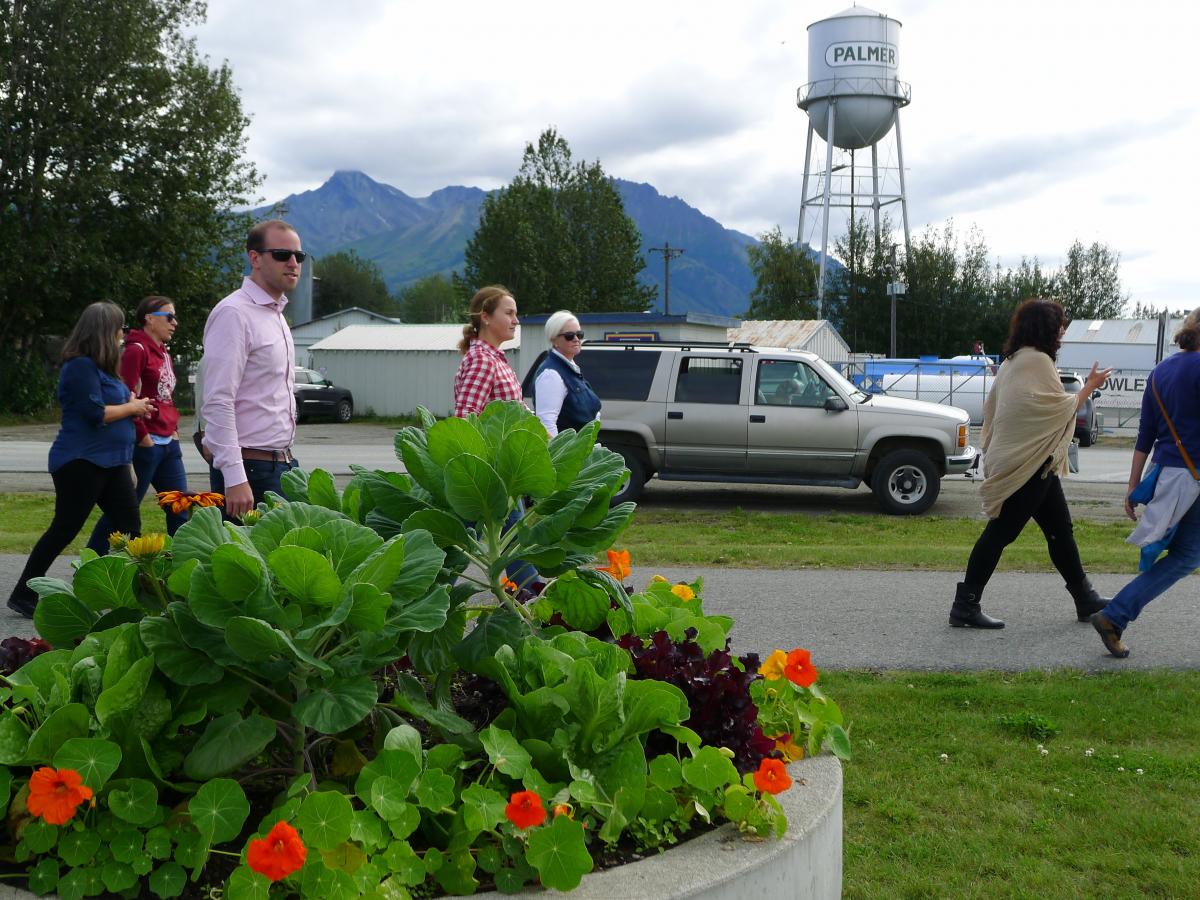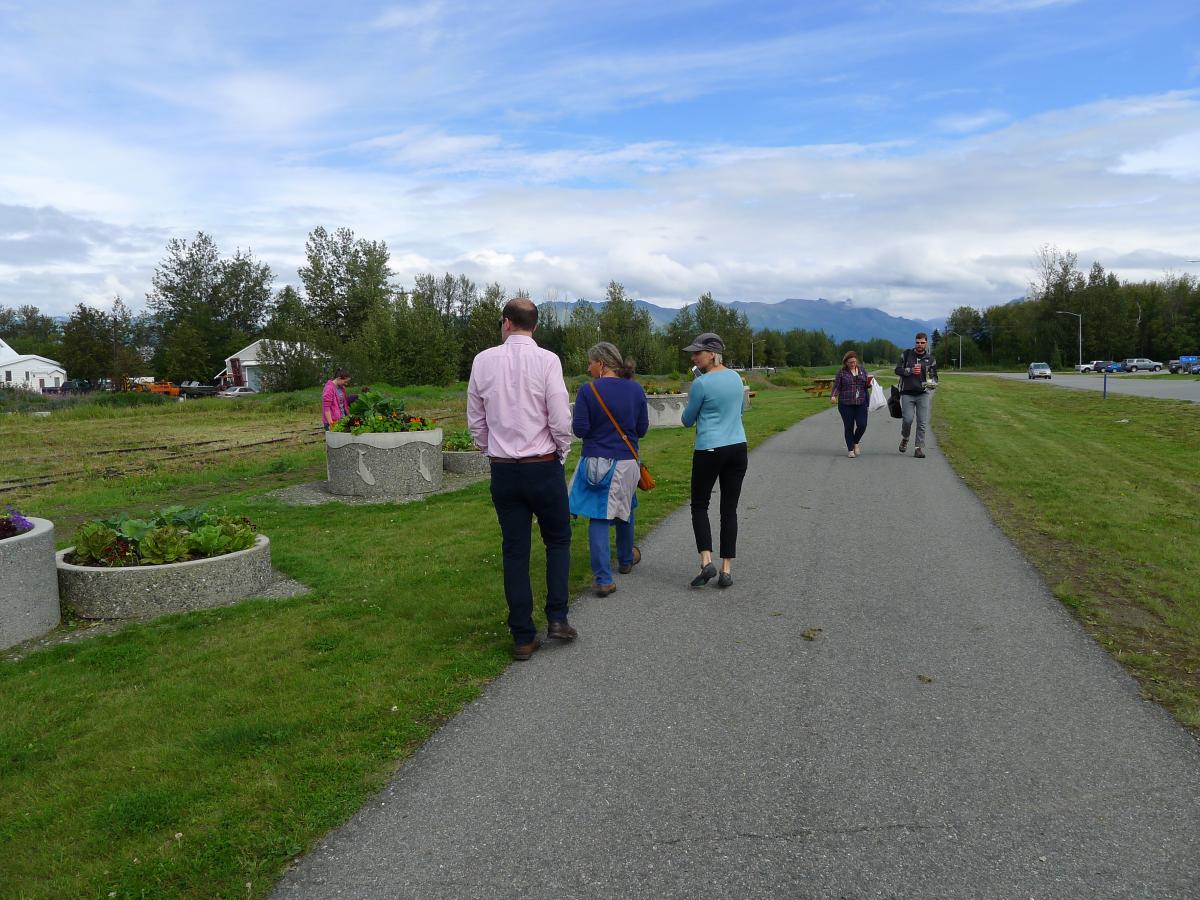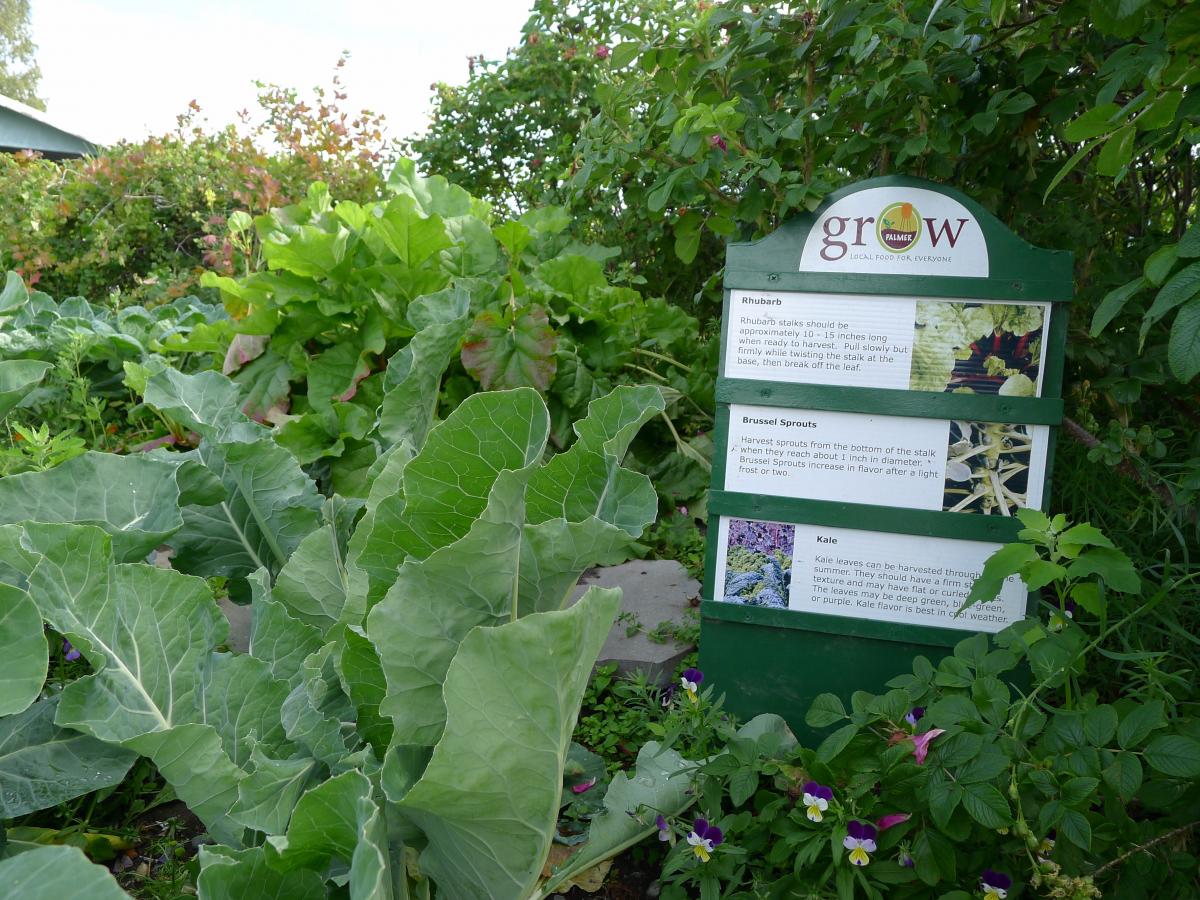In 1935, as part of the New Deal, President Franklin Delano Roosevelt’s administration moved 203 Midwestern families from their economically depressed farms to form the Matanuska Colony in what is now Palmer, Alaska. These agricultural families migrated from Minnesota, Wisconsin, and Michigan to the Matanuska-Susitna Valley, approximately 45 miles north of Anchorage, 24 years before Alaska became a state. With 40 acres allocated per family, these farming colonists cultivated the land into what is now the heart of Alaska’s agricultural production.
These days, ideas are homegrown in Palmer rather than imported from the “Lower 48.” Paying homage to the fact that it is the only part of the state with an agricultural heritage, Palmer is using locally grown food as a driver of economic development, with a focus on walkability as the primary link between the community’s many food assets.
 Planters in public spaces grow food like broccoli, kale, and rainbow chard that is free and available for anyone to pick and eat.
Planters in public spaces grow food like broccoli, kale, and rainbow chard that is free and available for anyone to pick and eat.
Grow Palmer, an organization spearheaded by Palmer resident Jan Newman, cultivates community by growing food in public spaces that is free and available for anyone to pick and eat. Grow Palmer makes locally grown, nutritious foods available for free to anyone and everyone by filling planters with kale, broccoli, and rainbow chard, among other vegetables, outside of local businesses and in front of the Palmer Depot, a converted train station that now functions as a community gathering space.
Grow Palmer’s most recent endeavor is planting edible food along the town’s multi-modal rail trail, called the “Edible Rail Trail.” Phase I of the Edible Rail Trail, a series of 40 planters teeming with zucchini, nasturtiums, kohlrabi, and other vegetables, was completed in Summer 2016 in partnership with the City of Palmer. “The Edible Rail Trail is the ideal place for a Grow Palmer planting area” says Jan Newman, “as it allows healthy food to be more accessible to a wider range of people, and provides community members a wider range of physical, mental and social health benefits.” Exemplified by Grow Palmer's planters and Edible Rail Trail, the Palmer community takes a holistic approach to food access, active transportation, and local economic development, viewing them as inextricably linked to one another. “Our local food culture draws visitors and helps create an overall identity for Palmer that contributes to community pride, as well as experiences that contribute to Palmer’s livability,” says Newman.
 The edible rail trail in Palmer, AK has 40 planters that grow zucchini, nasturtiums, kohlrabi, and other vegetables.
The edible rail trail in Palmer, AK has 40 planters that grow zucchini, nasturtiums, kohlrabi, and other vegetables.
This approach helped Palmer garner attention from the Environmental Protection Agency’s Local Foods, Local Places, an initiative intended to “create walkable, healthy, economically vibrant neighborhoods through the development of local food systems.” Through a two-day Local Foods, Local Places workshop, residents, food systems stakeholders , and government officials developed an action plan to use local food as a driver of economic development in Palmer. This group prioritized improving connectivity to the Edible Rail Trail, with the goal of addressing missing sidewalks, crosswalks, and wayfinding signs, as the next opportunity for promoting walkable food access and connections between the Edible Rail Trail, farms, restaurants, retailers selling locally/Alaska grown products, and “Friday Fling,” the city’s weekly farmers market and food celebration.
The Edible Rail Trail is an innovative example of Safe Routes to Healthy Food, a concept the Safe Routes Partnership has been refining over the past year that refers to overcoming active transportation challenges to accessing healthy foods. Palmer’s focus on ensuring that its food assets are accessible for people biking and walking is both important and unusual. Often, healthy communities advocates self-segregate into either food access or active transportation/physical activity, separating their strategies even when working in the same place. With Safe Routes to Healthy Food, we are working to make recommendations that advocates, practitioners, and communities can use that bring these two sectors together to ensure that all people can safely, conveniently, and affordably walk, bike, or take public transit to access healthy food.

By developing the Edible Rail Trail to provide free vegetables for people walking or bicycling, Palmer is no longer importing its ideas from halfway across the country. Instead, it now serves as the model for communities across the country looking to co-locate food assets and trails, and provides an exciting example of Safe Routes to Healthy Food.
You can learn more about our emerging Safe Routes to Healthy Food work here and about Palmer’s Edible Rail Trail here.
Is your community doing Safe Routes to Healthy Food work? Are there significant challenges or opportunities your community faces walking, bicycling, or taking public transit to get food – especially healthy food? Share your story of how your community is linking walking, bicycling, or public transit with food access or the challenges it’s having in doing so.

